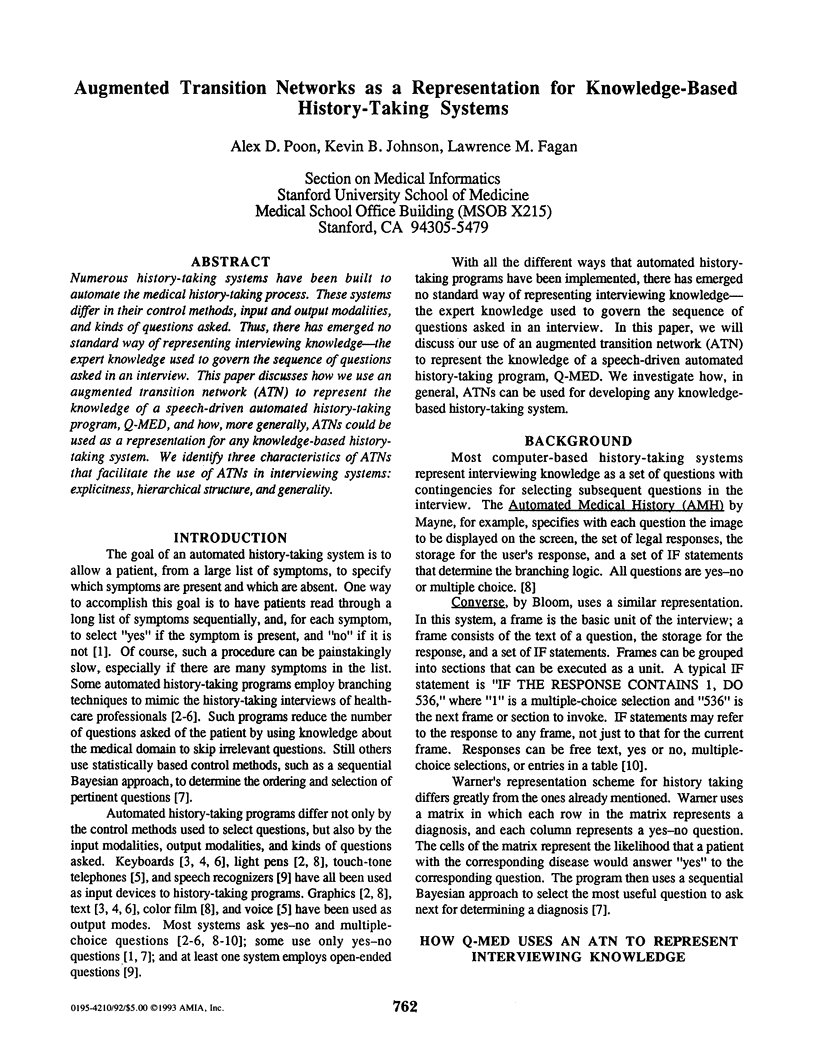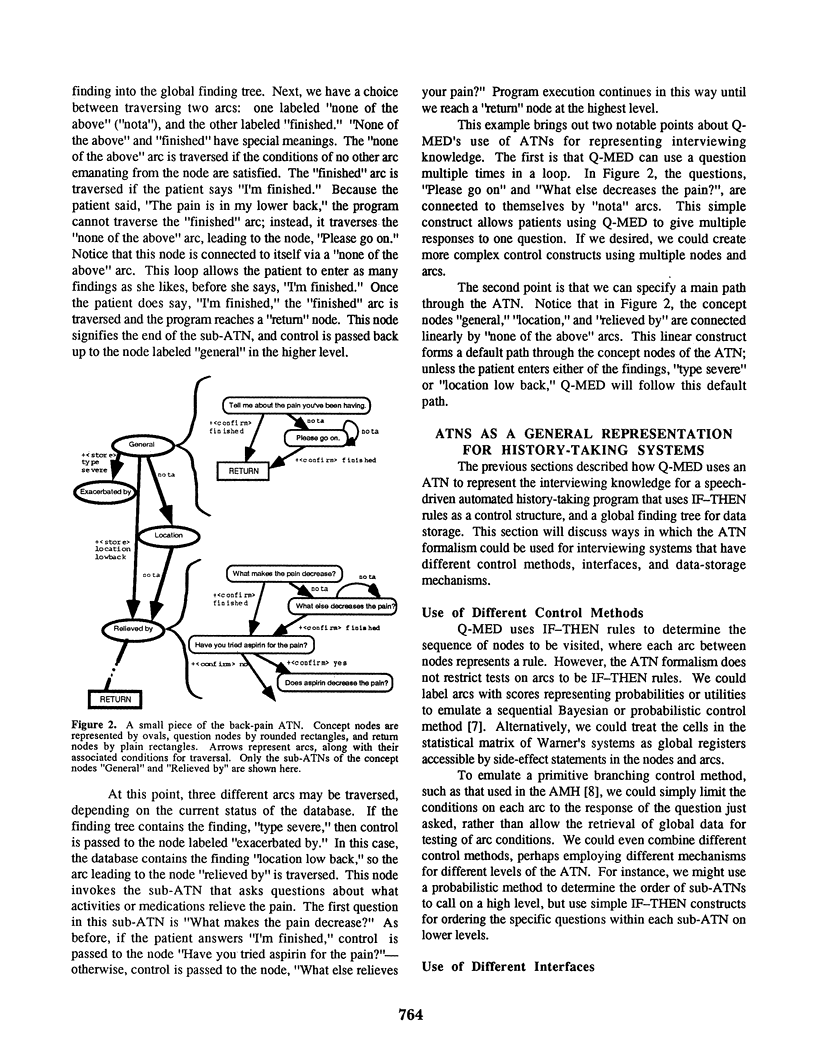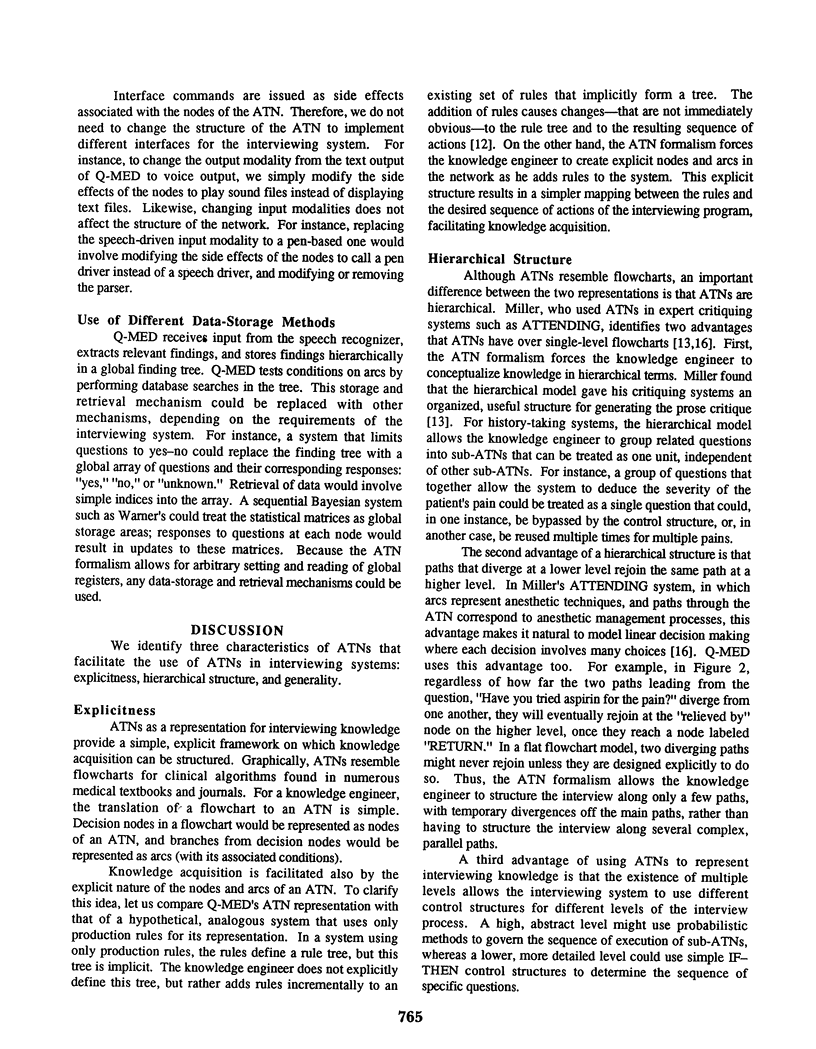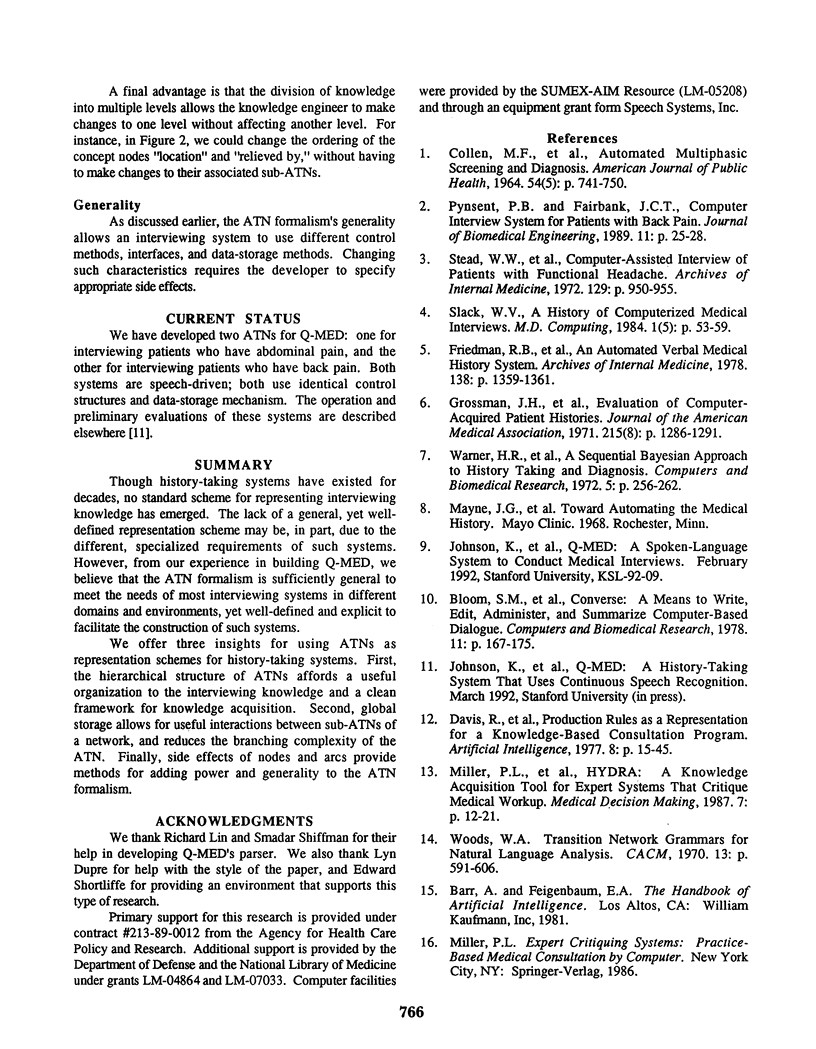Abstract
Numerous history-taking systems have been built to automate the medical history-taking process. These systems differ in their control methods, input and output modalities, and kinds of questions asked. Thus, there has emerged no standard way of representing interviewing knowledge--the expert knowledge used to govern the sequence of questions asked in an interview. This paper discusses how we use an augmented transition network (ATN) to represent the knowledge of a speech-driven automated history-taking program, Q-MED, and how, more generally, ATNs could be used as a representation for any knowledge-based history-taking system. We identify three characteristics of ATNs that facilitate the use of ATNs in interviewing systems: explicitness, hierarchical structure, and generality.
Full text
PDF




Selected References
These references are in PubMed. This may not be the complete list of references from this article.
- Bloom S. M., White R. J., Beckley R. F., Slack W. V. Converse: a means to write, edit, administer, and summarize computer-based dialogue. Comput Biomed Res. 1978 Apr;11(2):167–175. doi: 10.1016/0010-4809(78)90028-9. [DOI] [PubMed] [Google Scholar]
- COLLEN M. F., RUBIN L., NEYMAN J., DANTZIG G. B., BAER R. M., SIEGELAUB A. B. AUTOMATED MULTIPHASIC SCREENING AND DIAGNOSIS. Am J Public Health Nations Health. 1964 May;54:741–750. doi: 10.2105/ajph.54.5.741. [DOI] [PMC free article] [PubMed] [Google Scholar]
- Friedman R. B., Huhta J., Cheung S. An automated verbal medical history system. Arch Intern Med. 1978 Sep;138(9):1359–1361. [PubMed] [Google Scholar]
- Grossman J. H., Barnet G. O., McGuire M. T., Swedlow D. B. Evaluation of computer-acquired patient histories. JAMA. 1971 Feb 22;215(8):1286–1291. [PubMed] [Google Scholar]
- Miller P. L., Blumenfrucht S. J., Rose J. R., Rothschild M., Swett H. A., Weltin G., Mars N. J. HYDRA: a knowledge acquisition tool for expert systems that critique medical workup. Med Decis Making. 1987 Jan-Mar;7(1):12–21. doi: 10.1177/0272989X8700700106. [DOI] [PubMed] [Google Scholar]
- Stead W. W., Heyman A., Thompson H. K., Hammond W. E. Computer-assisted interview of patients with functional headache. Arch Intern Med. 1972 Jun;129(6):950–955. [PubMed] [Google Scholar]
- Warner H. R., Rutherford B. D., Houtchens B. A sequential Bayesean approach to history taking and diagnosis. Comput Biomed Res. 1972 Jun;5(3):256–262. doi: 10.1016/0010-4809(72)90087-0. [DOI] [PubMed] [Google Scholar]


